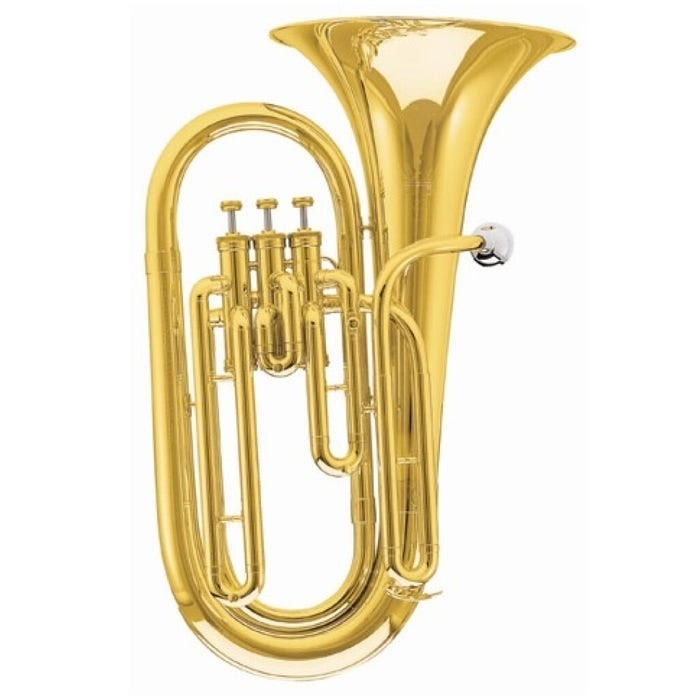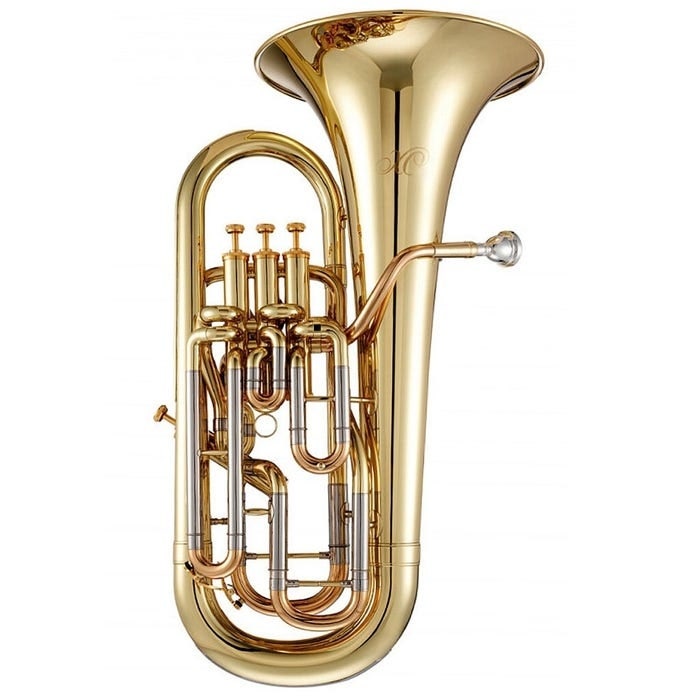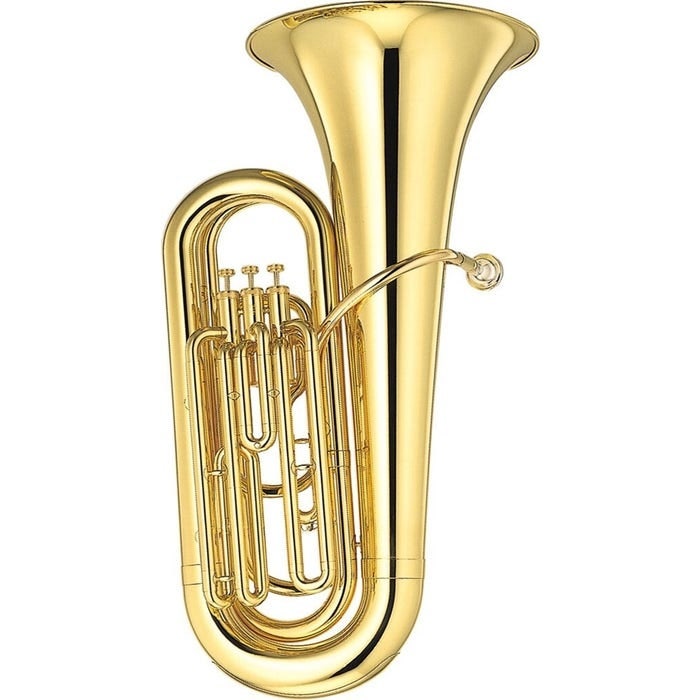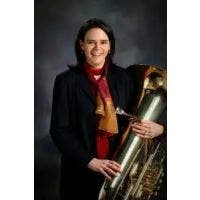Find Your Perfect Low Brass Instrument
Answer the following questions to discover whether a baritone, euphonium, or tuba might be the best fit for your musical journey.
Your Recommended Instrument
Read More About Below
Baritone vs. Euphonium
The main difference is the bore size. The euphonium is conical (the tubing gradually gets bigger from the mouthpiece to the bell) and the baritone is cylindrical (it maintains a consistent bore size throughout the major portion of the instrument which means it has a brighter sound). The baritone instrument is considered a small bore instrument. It is pitched in BBb and typically has three valves. It is a traditional instrument of the British brass band. The euphonium has a larger bore (and is conical) and has a darker sound. Euphoniums will have three or four valves.
When considering euphonium vs. baritone range, the baritone horn generally plays in a slightly higher register due to its cylindrical bore, producing a brighter sound. The euphonium, with its conical bore, supports a more extended lower range and can blend more smoothly with tubas in ensemble settings.
Some musicians may wonder how the baritone or euphonium compares to the horn. While the euphonium has a rich, warm sound similar to the French horn, its playing technique is more aligned with other low brass instruments. The horn, on the other hand, has a narrower bore and requires a different embouchure, making it distinct in both sound and playing approach.
Euphonium vs. Tuba
While both the euphonium and tuba belong to the brass family, they serve different roles in ensembles. The euphonium is smaller, with a conical bore that produces a mellow tone, whereas the tuba is the largest brass instrument, providing the bass foundation in bands and orchestras. If you're wondering, 'Is a euphonium bigger than a tuba?' the answer is no—the tuba is significantly larger and plays in a lower register
The 3/4 tuba is a smaller, more manageable version of a full-sized tuba, often recommended for younger players or those needing a more portable option. Compared to a euphonium, a 3/4 tuba still plays in a lower register but is slightly closer in size, making it easier to handle than a full-sized tuba.
Sousaphone vs. Tuba
The sousapone was invented by composer and conductor, John Phillip Sousa and the instrument maker J. W. Pepper (Philadelphia). The design was adapted from the tuba and the helicon. In 1893, Pepper built an instrument that allowed the bell to be pointed upwards for the concert setting and forward for the march. He called it a “ sousaphone” to thank Sousa for his suggestions.
A common question among musicians is 'Sousaphone vs. Tuba: What’s the Difference?' The tuba is typically played in seated positions in orchestras and concert bands, while the sousaphone is a marching adaptation designed for portability. The two instruments share similar tubing lengths and pitch ranges, but the sousaphone wraps around the player's body for ease of movement in parades and field performances.
What About the Mouthpiece?
The size of mouthpiece that you play with your tuba or euphonium is very important. A mouthpiece that fits properly to the instrument and also to the player can make a player’s job easier. A beginning student should use a smaller mouthpiece, especially if they are playing a smaller three-valved instrument. This allows the player to have more immediate response and a more focused sound. The more advanced player (and one with a larger instrument) will want a bigger mouthpiece for a more resonant sound in the low register but also something that allows ease and good intonation in the upper register.
FAQs
What is a Conical Bore?
The tuba and euphonium are considered conical instruments. A conical instrument has a gradual taper (gradually gets larger through 2/3 of the tubing). They produce a more mellow tone quality.
Does my euphonium have a Compensating System?
A euphonium that has a compensating system has a fourth valve (operated by the left hand) and has extra tubing or “knuckles” on the back of valves 1, 2, and 3. The fourth valve (positioned on the side of the instrument), in addition to the extra tubing makes it possible to play chromatic notes between the first and second partials. It also makes for much better intonation overall. The fingering system is such that you can play Db using 2/3, add the fourth valve and play the octave lower in tune. On a non-compensating instrument, you would not be able to play the same fingering for that low Db. For example, on a non-compensating instrument, you would have to play a half step lower (fingering 1/3) and adding the fourth valve to play a “sharp” Db. Also with a compensating instrument, you can now play the low B natural using 1, 2, 3, 4. With a compensating instrument you get better intonation, all of the chromatic notes from low to high and better fingering combinations. If you are going to purchase a euphonium, make sure you at least buy one with four valves (whether compensating or non-compensating). The euphonium with four valves is far superior to a three-valved instrument because it allows for better intonation.
When was the Valve Invented?
The first valve was invented in 1815 by Heinrich Stolzel.
How do I use the 4th Valve on my Tuba?
When used alone or in combination with other valves, the 4th valve will provide better intonation. The other thing it does is allow all of the chromatic notes between low Bb and pedal BBb. The 4th valve tubing is just a bit longer overall than the 1st and 3rd valves depressed together. So, it will take the place of the 1st and 3rd combination and will be better in tune. Here are some fourth valve fingerings to try out on your BBb tuba:
- Low C – 4
- Low B natural – 2, 4
- Low Bb – open
- Pedal F – 4
- Pedal E – 2, 4
- Pedal Eb – 1,2,4
- Pedal D – 2, 3, 4
- Pedal Db – 1, 3, 4
- Pedal C – 1, 2, 3, 4
- Pedal B natural (fake) 2, 3
- Pedal Bb – open
Rotary or Piston Valves?
When deciding which is better, it is really up to the player. Piston valves move up and down while rotary valves (like the French horn valve) rotate in a circle. Some people say that rotary valves make for smoother player while pistons provide more of an openness and immediate response. The player has to determine their personal preference in this matter. Neither is “better or worse”, just different.
How Many Different Keyed Tubas are There?
There are four keys of tubas from which to choose. From the largest to the smallest you will find the BBb and CC contrabass tubas and the Eb, and F “bass” tubas. Junior High/Middle School and High School players will begin on the BBb contrabass tuba. It is a good instrument for providing the foundation of the band (playing the low notes). If a student decides to go to college and major in music then she/he may be asked by the professor to switch to CC tuba. The CC tuba is somewhat smaller (has less tubing) than the BBb tuba. The CC tuba is more agile and easier to facilitate in the upper register. The Eb and F tubas are used mainly for solo and high orchestral playing. These instruments are smaller and are much easier to facilitate in the upper register. High orchestra parts (written by Berlioz, Prokofiev, Mendhlesson and others) and solos written for bass tuba are much more fun and manageable on these Eb and F tubas.
How do I Know What Instrument to Buy?
When buying a tuba or euphonium the main considerations should be the sound of the instrument when played, the ease of response, the durability, and the cost. You want to buy an instrument that “resonates” with you, the player. If you like the sound it produces and you are able to play it with relative ease (in tune) then it is worth considering. You also want to know that it will last and that will have resale value. There should be sufficient bracing on the instrument. The bracing protects the slides and the tubing from being damaged. Ask your private teacher or band director to assist you when buying an instrument. They can help decide which one is best for you.
What is the Best Way to Care for a Low Brass Instrument?
It is important to treat your instrument with care. By keeping the instrument clean, the valves oiled, the slides greased, you will help the extend longevity of the instrument. Be sure to oil your valves at least twice a week, grease your slides once a month and have it professionally cleaned once a year. Do not drink or eat before you play UNLESS you brush your teeth! All of that will end up in your instrument and make for problems later. You can also purchase a mouthpiece brush and clean your mouthpiece once a week. This helps keep the instrument clean and playing well.






